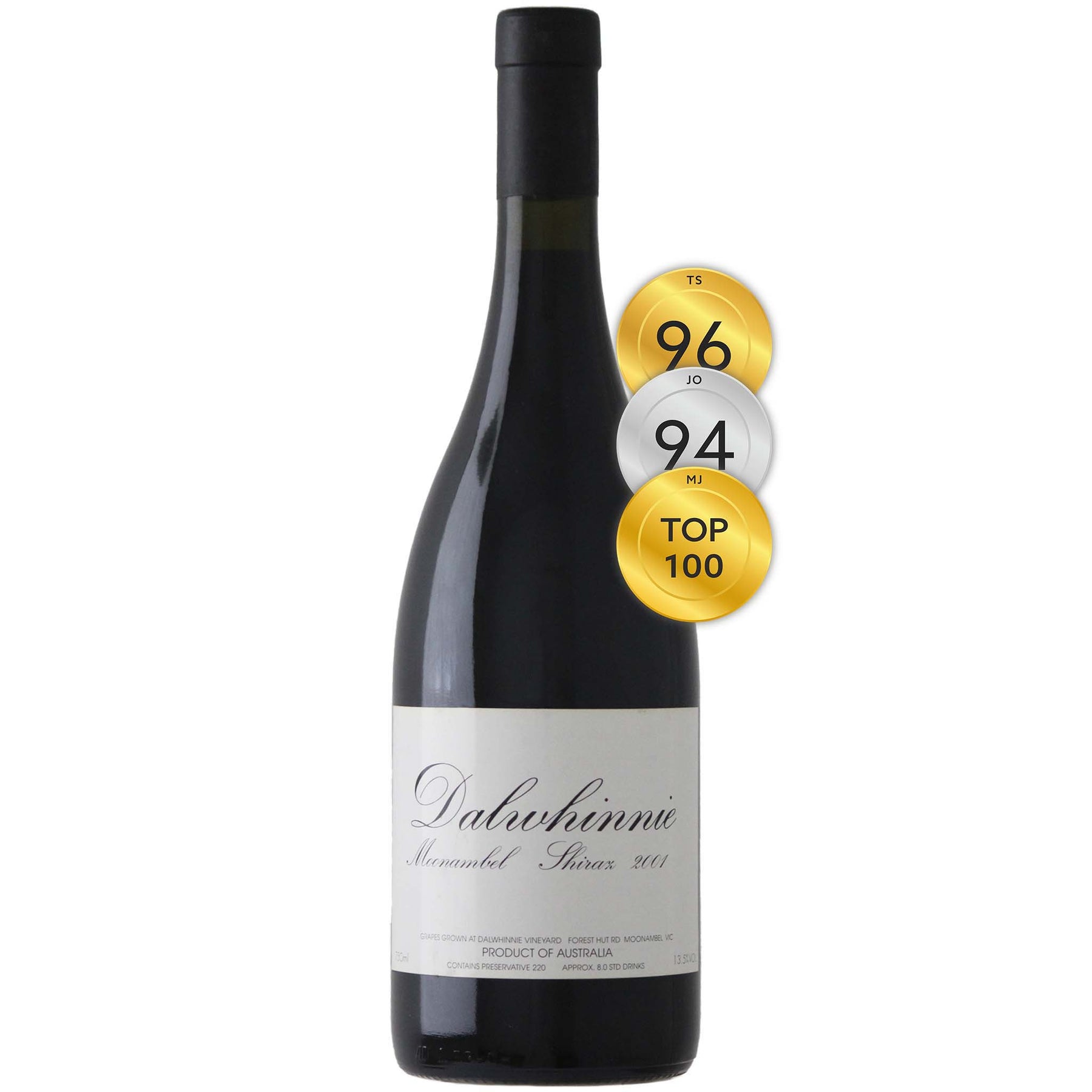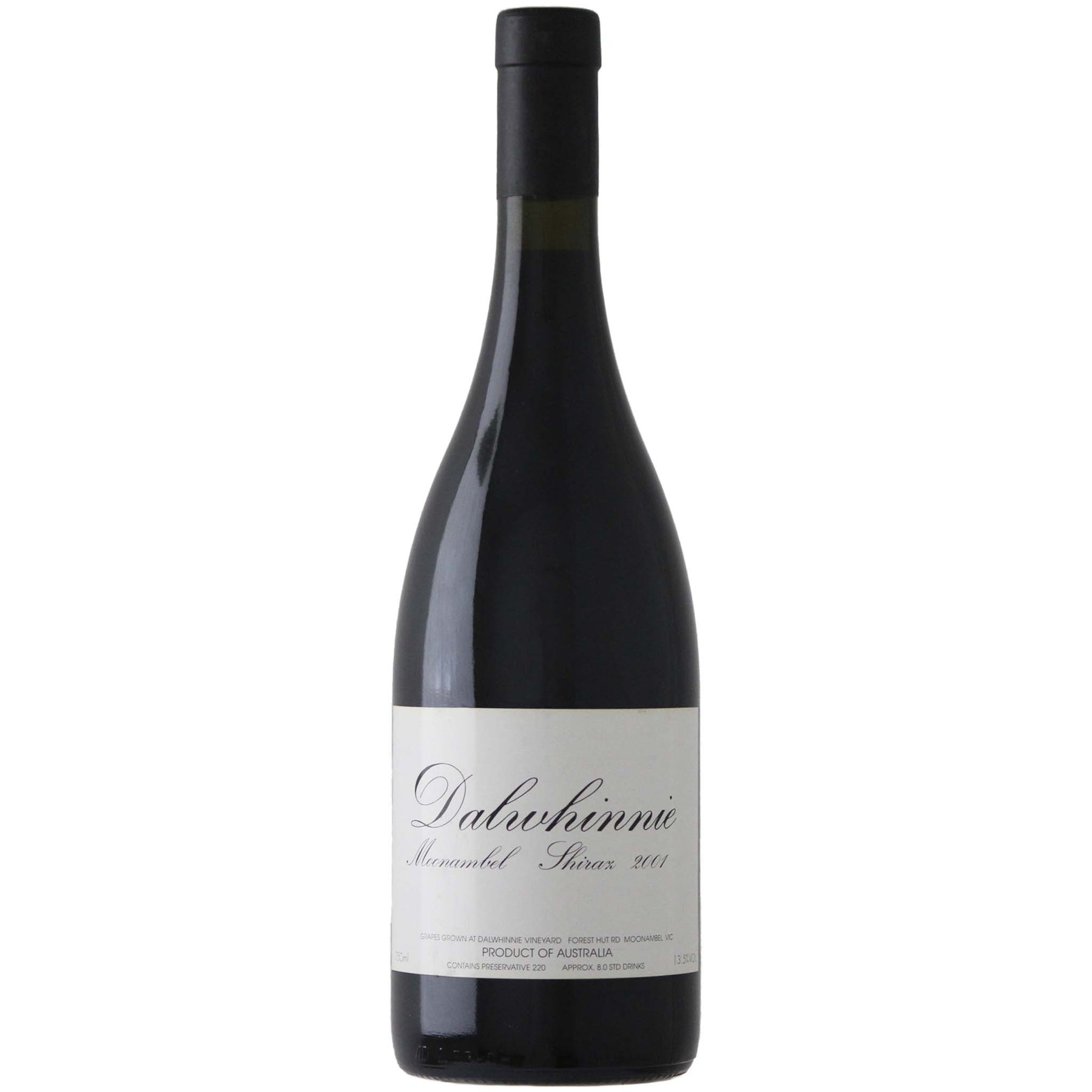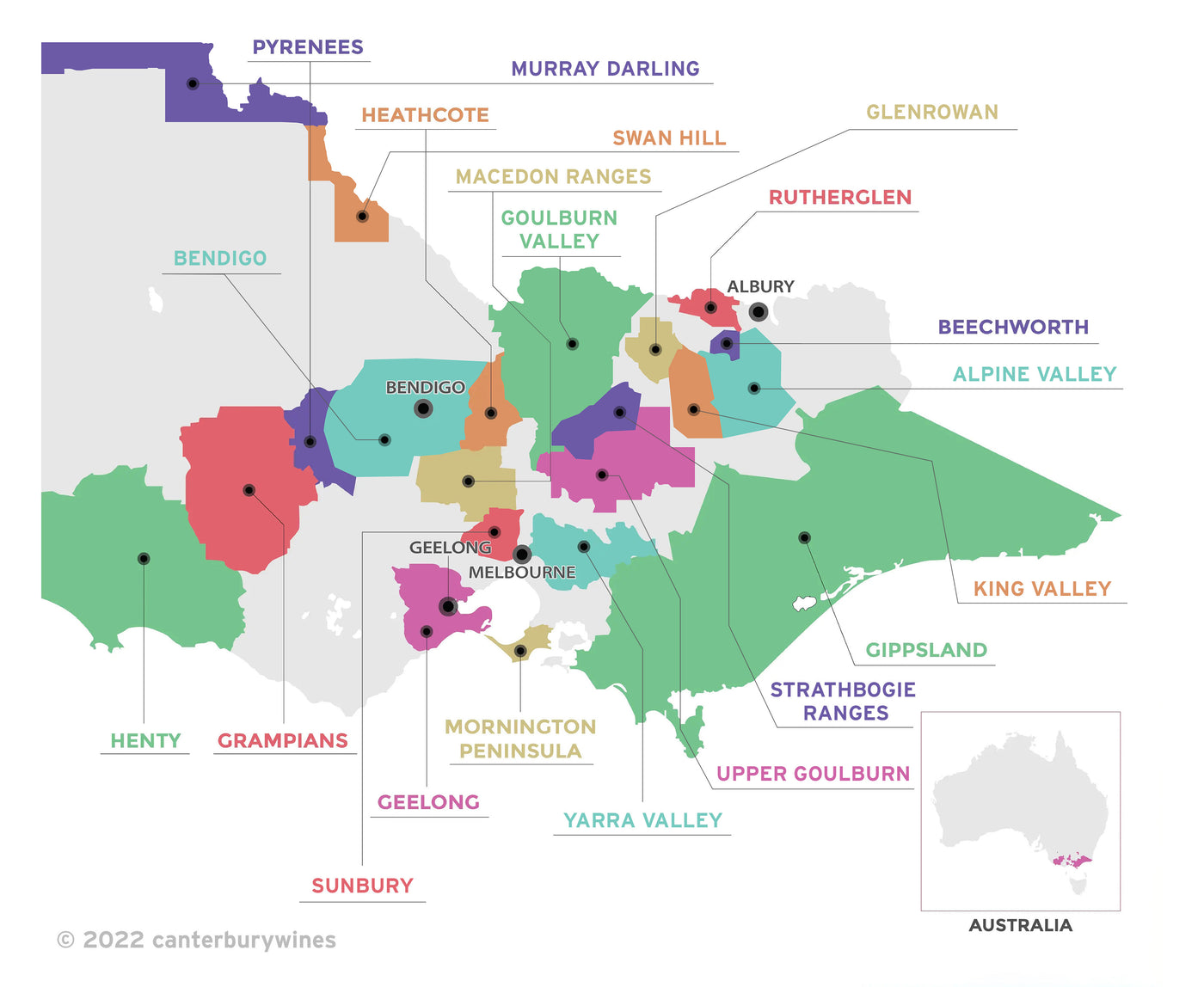

Dalwhinnie Moonambel Shiraz 2001
Style: Red Wine
Closure: Cork
Dalwhinnie Moonambel Shiraz 2001
Warehouse
34 Redland Drive
Vermont VIC 3133
Australia
Critic Score: 96
Alcohol: 13.5%
Size: 750 ml
Drink by: Now
"The Dalwhinnie Shiraz vineyard is one of Australia's great wine treasures." Campbell Mattinson
Dalwhinnie, located near the small village of Moonambel in the heart of the Pyrenees region of western Victoria, is one of Victoria's oldest family-run vineyards. Dalwhinnie has been growing grapes for nearly 50 years and the 16-hectare vineyard is now fully mature. At 595 metres above sea level, Dalwhinnie is the highest and most remote of the Pyrenees district vineyards. The vineyard is located in a naturally undulating trough which falls away from the hills, forming an amphitheatre nestled into the ranges.
"Plum pudding, stewed plums, fresh plums, cinnamon, mixed spice, nougat, white pepper, chocolate, bright berry fruit, rhubarb ... it goes without saying that this wine is incredibly complex. The fact that it is at the same time elegant is in itself significant, as is its excellent, fine tannin structure, not to mention its length – very, very long." Tyson Stelzer
Expert reviews
"Brilliant, brilliant, coolish climate Shiraz – aromatherapeutic and organoleptically Olympic. David Jones's wines have, in the space of one vintage, become some of Australia's most sought after bottles." Matthew Jukes, matthewjukes.com - Top 100 Australian Wines of 2005
"Medium purple; there is no point attempting to separate the nose, palate and finish – they are unambiguously identical. Plum pudding, stewed plums, fresh plums, cinnamon, mixed spice, nougat, white pepper, chocolate, bright berry fruit, rhubarb ... it goes without saying that this wine is incredibly complex. The fact that it is at the same time elegant is in itself significant, as is its excellent, fine tannin structure, not to mention its length – very, very long. Drink: 2007-2011." Tyson Stelzer, Winefront Monthly - 96 points
"Complex, understated aromas of floral, spicy and musky red cherries, plums and raspberries overlay suggestions of undergrowth, leather and freshly turned earth. Fine and restrained, but with a smooth and fatty texture, it opens to reveal layers of meaty, savoury shiraz flavours, dusty oak and loose-knit tannins. Rather a change in style for Dalwhinnie, but it should cellar as well as ever. Drink: 2009-2013+." Jeremy Oliver - 94 points
Awards
Matthew Jukes Top 100 Australian Wines of 2005
About the winery

Dalwhinnie, located near the small village of Moonambel in the heart of the Pyrenees region of western Victoria, is one of Victoria's oldest family-run vineyards. Dalwhinnie has been growing grapes for nearly 50 years and the 16-hectare vineyard is now fully mature.
Ballarat architect Ewan Jones purchased the site in 1973 and named it after the Highlands town of his Scottish ancestors. He established the vineyard in 1976 and his eldest son, David, took over its management seven years later. David subsequently purchased the property in 1994 and operated Dalwhinnie until January 2020, when it was acquired by Fogarty Wine Group.
At 595 metres above sea level, Dalwhinnie is the highest and most remote of the Pyrenees district vineyards. The vineyard is located in a naturally undulating trough which falls away from the hills, forming an amphitheatre nestled into the ranges. According to David Jones, the hills and the sedimentary soils of the Pyrenees are vital factors in the vineyard's uniqueness.
The main grape varieties grown are Chardonnay, Shiraz and Cabernet Sauvignon. These small individual vineyards average around 1.8 hectares in size and because of the hungry sedimentary soils, cropping levels are low - only 1.5 tonnes per 0.8 of a hectare.
The site is totally frost-free which enables the grapes to reach optimum ripeness. The vineyard is non-irrigated and operated on strong organic viticultural principles. The fruit is hand-picked and the vines are cane-pruned by hand. Harvest usually starts the third week in February and is completed around the first week in April. Cover crops are sown every year between the vineyard rows to add nitrogen to the soil. The average annual rainfall is 550mm with most rain falling between July and November.
"In Dalwhinnie, the Joneses have happened upon that rare but blessed confluence of factors: site, soil, climate, cultivars, viticultural practices and sensitive winemaking. Sit back and watch, as Dalwhinnie etches a name for itself, not only among the great wines of Australia, but the world." Huon Hooke

Victoria
Victoria is home to more than 800 wineries across 21 wine regions. The regions are Alpine Valley, Beechworth, Bendigo, Geelong, Gippsland, Glenrowan, Goulburn Valley, Grampians, Heathcote, Henty, King Valley, Macedon Ranges, Mornington Peninsula, Murray Darling, Pyrenees, Rutherglen, Strathbogie Ranges, Sunbury, Swan Hill, Upper Goulburn and Yarra Valley.
Victoria's first vines were planted at Yering in the Yarra Valley in 1838. By 1868 over 3,000 acres had been planted in Victoria, establishing Victoria as the premier wine State of the day. Today, the original vineyards planted at Best's Wines are among the oldest and rarest pre-phylloxera plantings in the world.
Victoria's climate varies from hot and dry in the north to cool in the south and each wine region specialises in different varietals. For example, Rutherglen in the north is famous for its opulent Muscats and Topaque and bold reds, while the many cooler climate regions near Melbourne produce world class Chardonnay and pinot Noir. Victoria is truly a wine lover's playground.

